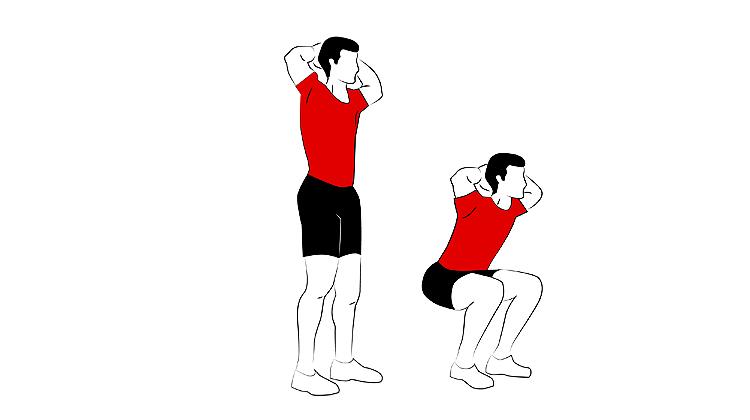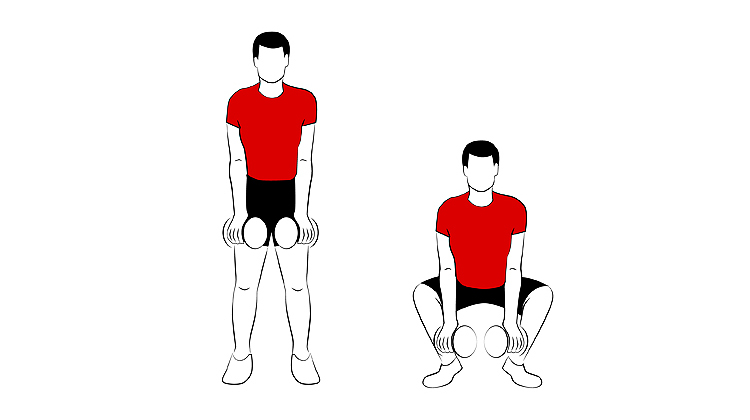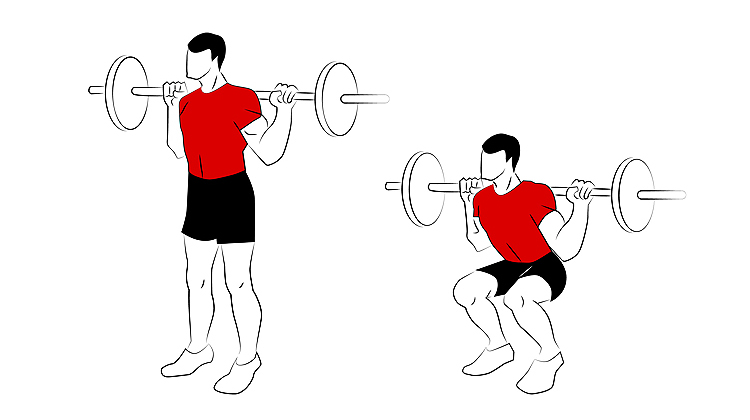


You should be thankful to your old teachers or platoon sergeants for punishing you with squats. The deceptively simple exercise is devastatingly effective – so long as you use the right techniques. Couple squats with weights, and you get a solid, well-rounded workout.
As there are many versions to the basic squat, choose a variant to suit your fitness level. The basic bodyweight squat activates some of the body’s biggest muscles: those in your buttocks, back and legs. But if you find those too easy, combine the squat with dumbbells, barbells or even kettle bells. This will put the emphasis on the shoulders, back and abdominal muscles, while putting pressure on your lower body. To prevent injury while using weights, remember to keep your back straight and go slow – this isn’t a race!
Here are three squat variants, in increasing order of difficulty, with a top tip from fitness expert Erik Gunawan. If you’re a beginner, start with the Bodyweight Squat and move on once you feel more confident.
1. Bodyweight squat
Master the basics before you attempt the more challenging variants.
1. Start with your feet facing slightly outwards and shoulder-width apart. Keep your back straight and arms outstretched, palms down and parallel to the ground.
2. Bend your knees, stick out your bum, and lean forward at the waist. You should squat until your thighs are parallel to the floor. Don’t arch your back – ensure that it remains straight.
3. Pause in that position before slowly lifting yourself up.
4. Do three to four sets of 20 repetitions, at least three times a week.
Expert tip: Sticking out your chest and looking straight ahead will keep your back in a natural position

2. Dumbbell squat
You’ll need a pair of dumbbells – choose a comfortable weight – for this squat that emphasises your stabilisers (the muscles that stabilise your joints) and thighs.
1. Hold the dumbbells at your sides, palms facing inwards. Assume the regular squat position, and shift your weight to your heels.
2. Tighten your core and lower your body just like a regular squat: thighs parallel to the ground, butt stuck out, and back straight.
3. Pause, then raise yourself back to the starting position. Your torso should remain upright for the entire cycle.
4. Do two to three sets of 10 repetitions, at least twice a week.
Expert tip: Keep your feet flat on the floor for equal distribution of weight through forefoot and heel.

3. Barbell back squat
In addition to your thighs and buttocks, this intense workout trains the muscles in your lower back. Plus, it looks more impressive.
1. Position a barbell – with a comfortable amount of weight – behind your neck, resting on your trapezius. Grasp it firmly, separating your hands by a distance at least twice your width of your shoulders.
2. Assume the same starting position as the dumbbell squat.
3. Inhale, tighten your core, and then lower your body until your thighs are slightly past parallel to the floor. Remember to stick your butt out and keep your back straight.
4. As you raise yourself up, exhale slowly. Brace your abs throughout the entire exercise to further support your lower back and prevent injury.
5. Do two to three sets of 10 repetitions, at least once a week.
Expert tip: Arch your upper back to lock the bar in position so it doesn't move while you squat.
Please also note that there are all sorts of workouts and exercise; some are rigorous whereas some are slow-paced. As each workout or exercise is of different intensity, it is important to try the workout according to your fitness level. If you are unsure about proceeding with the suggested workouts, please consult your physician or other healthcare professional before beginning or changing any fitness program to make sure that it is appropriate for your needs.
Why not complement your squats workout with some powerful push-ups?
Erik Gunawan is the founder of Designed for Fitness, a boutique gym that focuses on functional and circuit training, body conditioning and plyometrics.